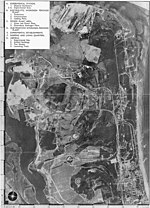Roman Träger
After these reports were given to the Polish Armia Krajowa (Home Army), who in turn passed them on to British intelligence in London, the Allies bombed Peenemünde in Operation Hydra in 1943, killing two V-2 rocket scientists and delaying V-2 test launches by seven weeks.
Four microfilm copies of the initial report prepared by Roman, were made by the Home Army's department Arka, a "Bureau for Industrial Studies", which was tasked with collecting and organizing information on German military production, factories, docks, iron works and experimental testing facilities.
A third copy was burned by its holder who was afraid of being imprisoned if it were found by the Polish Communist Secret Police or the NKVD; during the Stalinist era in Poland, former Home Army were persecuted by the authorities and the microfilm would have been proof that he had been a member of the organization.
The fourth copy survived however, sewn into Hanna's corset and was not found despite several searches of the Mickiewiczes' home and the arrest of Adam (he was released after Stalin's death in 1953 during the resulting period of political liberalization).
[4] It was only in the 1970s, after some limited political and social reforms, that a commemorative plaque for both father and son was finally put up, at the kamienica in Wełniany Rynek (Wool Market) where Augustyn lived during the war.
However, after the discovery of the microfilms in Hanna's corset, and their recovery, a joint Polish-British Historical Commission for Study of the Documentation of the Activities of Polish Intelligence Services During World War II was established and published two volumes on the subject.
